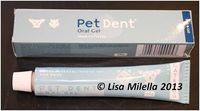Antiseptics for Oral Disease
Introduction
Antiseptics have two major roles in veterinary dentistry and oral surgery:
- To reduce the number of bacteria in the oral cavity prior to and during a procedure.
- To supplement mechanical plaque control.
It is good practice to rinse the oral cavity with a suitable antiseptic prior to and during dental and oral surgery. This reduces the number of potential pathogens, providing a cleaner environment to work in, thus reducing the resulting bacteremia induced by dental procedures. It also reduces the number of bacteria in the aerosol generated by dental equipment, e.g. ultrasonic scalers. This is beneficial to the operator and any assistants.
Chlorhexidine gluconate, an aqueous, non-alcohol containing solution, is generally regarded as being the oral antiseptic of choice in animals. The correct concentration should be used. A 0.2% solution is generally recommended as being safe, but a 0.05% solution may be indicated if the oral mucosa is exposed to the solution throughout the procedure. Care should be taken to avoid contact with the eyes.
Antiplaque Agents
Numerous chemical agents have been evaluated for the supplementation of mechanical plaque control. Clinically effective antiplaque agents are characterized by a combination of intrinsic antibacterial activity and good oral retention properties. Agents that have been evaluated include chlorhexidine, essential oils, triclosan, sanguinarine, fluorides, oxygenating agents, quaternary ammonium compounds, substituted amino-alcohols and enzymes. Of these, the agent with the greatest effect on the reduction of plaque and gingivitis is generally chlorhexidine. Chlorhexidine is the gold standard and the agent against which all antiplaque agents are tested. Antiplaque agents delivered from toothpastes, gels or mouth rinses can augment mechanical oral hygiene to control the formation of supragingival plaque and the development of early periodontal disease. It must be emphasized that none of these agents will prevent gingivitis on their own, i.e. in the absence of mechanical plaque removal. Moreover, all these agents are associated with adverse side effects. These effects vary according to the chemical agent, and include poor taste, a burning and/or numbing of oral mucous membranes, staining of teeth and soft tissues, and allergic reactions. The use of chemical antiplaque agents should be seen as adjunctive to the mechanical removal of plaque.
Some examples of situations where adjunctive use of topical chlorhexidine is useful are:
- Immediately postoperatively when discomfort from treatment (deep subgingival debridement, multiple extractions) may prevent mechanical plaque removal with a toothbrush.
- Intermittent use when an inflammatory process flares up, e.g. cats with chronic gingivostomatitis.
- Adjunct to toothbrushing when toothbrushing is performed suboptimally, e.g. animal won’t allow proper brushing or owner is not technically capable of efficient brushing.
The oral antiseptic of choice is chlorhexidine. Chlorhexidine gluconate is available as an aqueous solution and as a semi-fluid gel. It can be applied with a syringe, a piece of gauze or a toothbrush.
| This article was written by Lisa Milella BVSc DipEVDC MRCVS. Date reviewed: 13 August 2014 |
| Endorsed by WALTHAM®, a leading authority in companion animal nutrition and wellbeing for over 50 years and the science institute for Mars Petcare. |
Error in widget FBRecommend: unable to write file /var/www/wikivet.net/extensions/Widgets/compiled_templates/wrt66225b63ec55f2_39016743 Error in widget google+: unable to write file /var/www/wikivet.net/extensions/Widgets/compiled_templates/wrt66225b63efca36_19076042 Error in widget TwitterTweet: unable to write file /var/www/wikivet.net/extensions/Widgets/compiled_templates/wrt66225b63f2f8d1_42666324
|
| WikiVet® Introduction - Help WikiVet - Report a Problem |

